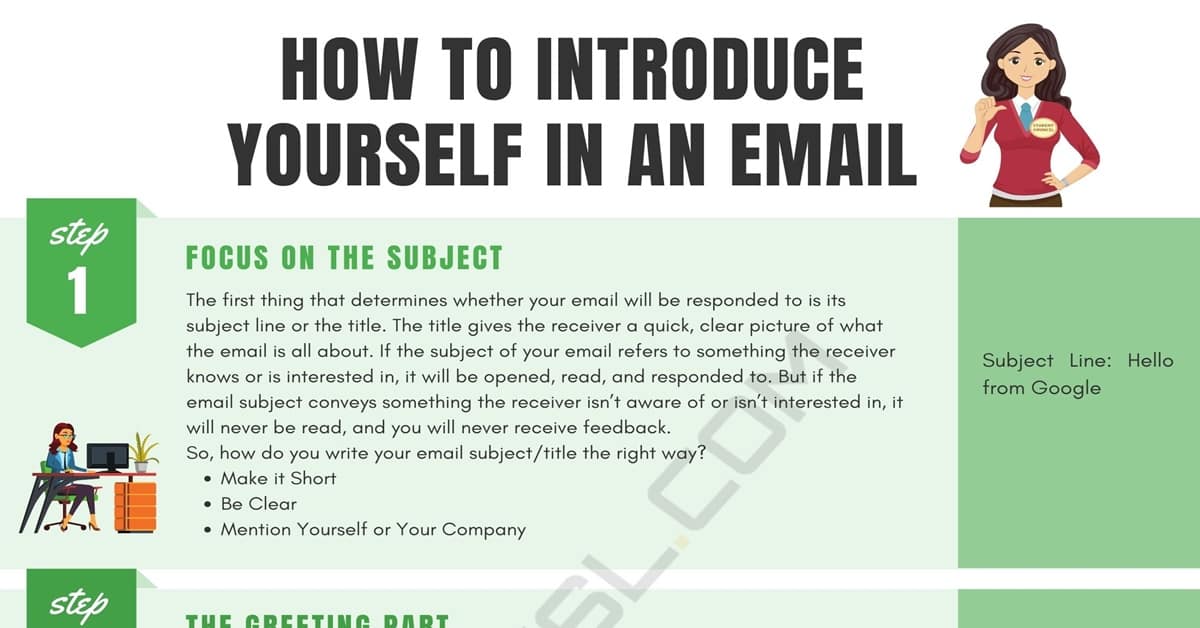How to introduce yourself in an email? Introducing yourself in an email may not be an easier thing as most of us tend to think. How you introduce yourself in an email will determine whether you will receive feedback or not. People are ever busy and may not have enough time to go through an email message that lacks a proper introduction. We understand that you don’t want to waste your useful time composing an email that will never be opened (leave alone being responded to), and that why we are composing this guide to give you a breakthrough.
Here we will take you through step by step guide on how to introduce yourself in an email. By the time you are done reading this guide, you will be in a position to compose emails that will be opened and responded to by your potential prospects.
How to Introduce Yourself in an Email
Focus on The Subject
The first thing that determines whether your email will be responded to is its subject line or the title. The title gives the receiver a quick, clear picture of what the email is all about. If the subject of your email refers to something the receiver knows or is interested in, it will be opened, read, and responded to. But if the email subject conveys something the receiver isn’t aware of or isn’t interested in, it will never be read, and you will never receive feedback.
So, how do you write your email subject/title the right way?
- Make it Short – if possible, write your email subject line in under 30 characters.
- Be Clear – The subject should tell the reader the purpose of your email at a glance.
- Mention Yourself or Your Company – other than knowing the reason behind your letter, the receiver should also know who is sending the message at a glance. This will inspire them to open.
For example:
Subject Line: “Hello from Google”
If you and the reader share some in common, mention it.
For example:
Subject Line: “Hi from a Fellow Rugby Player”
The Greeting Part
By now, the receiver has a clue of who is sending the message and its intention. Now start by greeting them warmly – how you write this part will determine whether you will establish a connection with them. Your greeting should be personal! If you know them, address them by their real name (avoid nicknames). For example, “Dear Dr. Hamton Blakah” or a casual reader, “Hi Martin Kim.”
Also, avoid writing things such as “Dear Sir/Madam.”
Writing The Intro
In this part, you should introduce yourself to the reader! Tell them who you are clearly and concisely. Introduce yourself in an email sample:
- “My name is Hampton; I’m a Fellow Blogger.”
- “I’m Richard Jones, the acting CEO at Company ABCD.”
Also, summarize why you are writing the message
E.g. “I’m Johnston Brown, The Acting Company Manager at ABCD. I’m writing in response to your Job Offer.”
Talk about Mutual Connection (If Any)
Mentioning a mutual connection between you and the reader will make them more interested in your message. It gives them the impression that you know them well in one way or the other. If you are directed by a familiar friend, mentioning them here is a huge boost. For example, “I recently had dinner with Maureen Doris, who informed me about your marketing strategies. “
Talk of What You Want and Inquire Whether The OK with Your Needs
Express your needs clearly and let ask your reader whether they are okay or not. Asking a question will prompt them to respond as soon as they are done reading your email message.
For example:
- “I was suggesting that we have a meeting this weekend. Are you too busy? Thanks!”
- “I’m learned that your business needs a new competent secretary. Is the position still up for grab?
The Final Words/Close
Your final words should show the reader that you appreciate them for reading your message and that you are anticipating their immediate positive response. Emails that end this way have higher chances of receiving a response. For example:
- “Thanks for your attention. Looking forward to hearing from you soon.”
- “I hope to hear your opinions before the due dates. Thanks in advance!”
Sign of with your legal names or company profile.
For example, “I’m hoping to receive your feedback soon.”
Signature
Richard James”
The Bottom Line
When introducing yourself via an email, be straight to the topic, write short paragraphs, and keep your message brief. Your primary purpose is to capture the recipient’s attention and not to distract them. Don’t make grammar or spelling mistakes that would otherwise play your professionalism down! If you have a hard time trying to introduce yourself in an email, always refer to this guide!
How to Introduce Yourself in an Email | Infographic
How to Introduce Yourself in an Email – Step by Step Guide








0 Comments